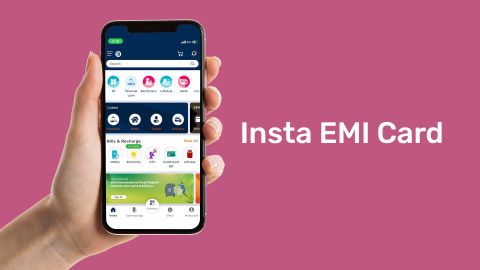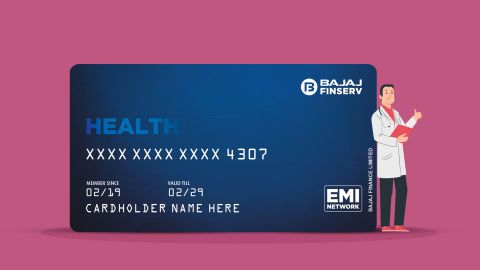Today, there are various affordable payment options available, making it challenging to choose the best one. EMI cards and credit cards are distinct financial tools. EMI cards suit budget-conscious individuals with low-interest or interest-free instalment plans, while credit cards offer flexibility with a revolving credit line, incurring interest on unpaid balances. Understanding these differences is crucial for informed financial decisions tailored to your needs.
What is a credit card
A credit card is a card wherein the issuing bank will assign a limit to the cardholder. The cardholder can use this limit to pay for any expense, although in some cases, there might be some exceptions. At the end of each month, the cardholder has to pay back the entire outstanding (total of all the expenses made on the card in that month). In case the cardholder chooses to pay a part of the outstanding, a hefty interest is charged on the remaining outstanding until the repayment. For some of the transactions, a credit card also offers the option to convert the purchase into interest-bearing or interest-free EMIs.
Each time, the cardholder decided to convert the expense into an EMI, the available limit of the card is blocked for that amount until the time of repayment. A credit card can be used at any outlet that accepts a Visa or a Mastercard.
What is Insta EMI Card
In a Bajaj Finserv Insta EMI Card, our existing customer is assigned a line (loan amount available for purchase on EMIs). Our existing customers can use this card to purchase any of our 1 million+ products ranging from electronics, apparel, gadgets, furnishing, and more across our partner online and offline network.
Each purchase made on the Insta EMI card is treated as a loan wherein the corresponding loan number is assigned to you. You can pay back this loan in EMIs over the tenure opted by you. You can make multiple purchases as long as the total amount spent is less than the line assigned to you. You also have the convenience of choosing different tenures for different purchases.
Difference between a credit card and the Insta EMI Card
Serial No. |
Comparison Point |
Credit Card |
Insta EMI Card |
1 |
Interest on Purchases |
No interest if paid in full by the due date; 100% payment required each month. |
Pay for purchases in up to 24 EMIs with minimal interest; special promotions may eliminate the need for a down payment. |
2 |
Pre-approved/Pre-assigned Limits |
Need to complete the application process and provide personal/income details to know the pre-approved limit. |
Existing customers receive a pre-approved limit; new customers can generate offers with a valid mobile number. |
3 |
Foreclosure Charges |
No concept of foreclosure charges. |
Can foreclose the loan anytime during tenure without extra charges; the full outstanding amount needs to be paid. |
Step-by-step guide to applying for the Bajaj Finserv Insta EMI Card
- Enter your 10-digit mobile number and verify the OTP sent to your phone.
- Fill in the application form with your basic details.
- Select your employment type and gender.
- Click on submit to know your card limit.
- Verify your KYC using your Aadhaar card or DigiLocker.
- Post successful KYC, pay a one-time joining fee of Rs. 530/- (inclusive of applicable taxes).
- Click on ‘Activate Now’ and enter your bank account number and IFSC code to complete the e-mandate process.
- After successful e-mandate registration, your card is ready to use.
Note: The online process may differ depending on whether you are a new customer or have an existing relationship with us.
Apply for an Insta EMI Card online
In summary, choosing between an EMI card and a credit card depends on individual financial needs, spending habits, and discipline. EMI cards are specialised for planned purchases with fixed monthly instalments, offering budgeting convenience but lacking the versatility and rewards of traditional credit cards.
In contrast, credit cards provide broader financial flexibility, rewards, and credit history building but come with the risk of accumulating high-interest debt if not used responsibly. Ultimately, the decision should align with financial goals, spending patterns, and credit management abilities. Understanding the terms and conditions is crucial for making a choice that fits your financial situation and preferences, emphasizing responsible financial management regardless of the chosen option.




